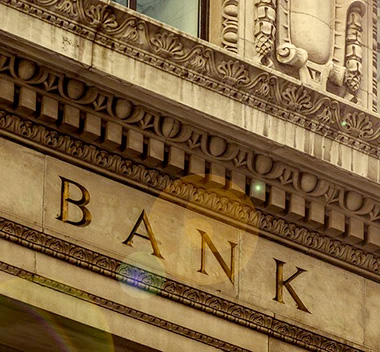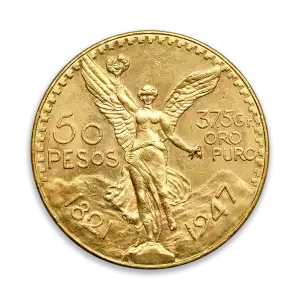
The increasing financial instability in the world has highlighted the need for safety nets for investors, such as the bail-in law. It is a law that allows banks to use their depositors’ funds to bail themselves out in case of an emergency. In this article, we’ll discuss the bail-in law and how it works, its risks, and how you can protect yourself from a bank bail-in.
What is the bail in law?
The bail-in law is a law that allows a bank to use its depositors’ funds to bail itself out in case of an emergency. This law was introduced in the US in 2014 after the financial crisis of 2008. It was introduced to provide banks with an alternative to government bailouts. The law requires banks to have a bail-in plan in place in case of a financial emergency.
The bail-in law is also known as the Bank Recovery and Resolution Directive. It was introduced in the EU in 2013 and it requires all banks to have a bail-in plan in place. The law was implemented to reduce the reliance on government bailouts and to ensure that banks can resolve their financial difficulties.
What are gold securities and why are they important?
Gold securities are securities that are backed by gold. They are typically used as a safe haven for investors during times of financial crisis, as gold is seen as a stable asset. Gold securities are important because they offer investors the opportunity to protect their investments from the risks associated with a bank bail-in.
Gold securities are also important because they provide a more stable return than traditional investments. When investing in gold securities, investors can benefit from the stability of gold’s price. This is important because it provides investors with the peace of mind that their investments are protected from the volatility of the stock market.
What is a bank bail-in?
A bank bail-in is a process in which a bank uses its depositors’ funds to bail itself out in case of a financial emergency. This is done by converting the depositors’ funds into equity in the bank. This process is generally done to prevent a bank from failing and to keep it afloat.
When a bank conducts a bail-in, it is required to notify its depositors and provide them with the option to convert their funds into equity. This process is generally used as a last resort, as it can have a detrimental effect on the depositors’ investments.
How does a bank bail-in work?
A bank bail-in works by converting the depositors’ funds into equity in the bank. This is done by transferring a portion of the depositors’ funds into the bank’s capital. This process can be done in a variety of ways, such as issuing new shares in the bank or converting the depositors’ funds into bonds or other securities.
Once the funds have been converted into equity, the bank can raise additional capital by issuing new shares or bonds. This additional capital can then be used to bail the bank out of its financial predicament.
What are the risks of a bank bail-in?
The biggest risk associated with a bank bail-in is the potential for loss of capital. When a bank conducts a bail-in, the depositors’ funds are converted into equity in the bank. This means that the depositors’ funds are no longer protected by the bank’s deposit insurance.
This can lead to a significant loss of capital for the depositors. Additionally, when a bank issues new shares or bonds, the value of the depositors’ investments can be affected by the performance of the new securities.
Another risk associated with a bank bail-in is the potential for a bank to become insolvent. When a bank conducts a bail-in, it is taking on additional risk by converting the depositors’ funds into equity. This additional risk can lead to the bank becoming insolvent, which means that the depositors’ funds will be lost.
What can you do to protect yourself from a bank bail-in?
The best way to protect yourself from a bank bail-in is to invest in gold securities. Gold securities are securities that are backed by gold, which makes them a safe haven for investors during times of financial crisis. Gold is seen as a stable asset and it can provide investors with the peace of mind that their investments are protected from the risks associated with a bank bail-in.
Additionally, you can also diversify your portfolio to reduce the risk of a bank bail-in. Diversifying your portfolio by investing in different asset classes can help reduce the impact of a bank bail-in on your investments. This can help to minimize the risk of a bank bail-in and the potential for a loss of capital.
The bail-in law in different countries and its implications
The bail-in law is in place in many countries around the world, such as the US, the UK, Canada, Australia, and the EU. Each country has its specific bail-in law, and the implications of these laws vary from country to country.
In the US, the bail-in law requires banks to have a bail-in plan in place in case of a financial emergency. This plan must include details such as the number of depositors’ funds that can be converted into equity, the types of securities that can be used, and the timeline for the conversion of funds.
In the UK, the bail-in law requires banks to ensure that deposits are protected up to a certain amount. This amount is known as the “depositor protection limit” and it is currently set at £85,000. This limit protects deposits up to this amount from being converted into equity in the event of a bail-in.
In the EU, the bail-in law requires banks to have a bail-in plan in place. Additionally, the bail-in law also requires banks to disclose details such as the types of securities that can be used, the timeline for the conversion of funds, and the maximum amount of deposits that can be converted into equity.
The impact of the bail-in law on the economy
The bail-in law has had a significant impact on the economy. By reducing the reliance on government bailouts, the bail-in law has allowed banks to become more independent and responsible for their financial stability. This has allowed banks to focus on risk management and take measures to reduce the risk of financial emergencies.
Additionally, the bail-in law has also had a positive impact on the economy by reducing the potential for moral hazard. Moral hazard occurs when banks take on excessive risks, as they are not held accountable for their actions. By introducing the bail-in law, banks are held accountable for their actions, as they are required to have a bail-in plan in place in case of a financial emergency.
Examples of successful and failed bank bail-ins
There have been several examples of successful and failed bank bail-ins around the world. The most notable example of a successful bank bail-in is that of the Bank of Cyprus, which conducted a bail-in in 2013. In this case, the bank was able to successfully convert deposits into equity and raise additional capital to bail itself out.
On the other hand, the most notable example of a failed bank bail-in is that of the Bank of England, which failed to conduct a successful bail-in in 2008. In this case, the bank was unable to convert deposits into equity and ultimately had to be bailed out by the government.
Conclusion
The bail-in law is a law that allows a bank to use its depositors’ funds to bail itself out in case of an emergency. This law has had a significant impact on the economy, as it has reduced the reliance on government bailouts and has allowed banks to become more responsible for their financial stability.
However, the bail-in law also carries with it significant risks, such as the potential for loss of capital and the potential for a bank to become insolvent. To protect yourself from the risks associated with a bank bail-in, it is important to invest in gold securities and diversify your portfolio.
It is important to understand the implications of the bail-in law and to be aware of the risks associated with it. By doing so, you can ensure that your investments are protected from the risks associated with a bank bail-in.







